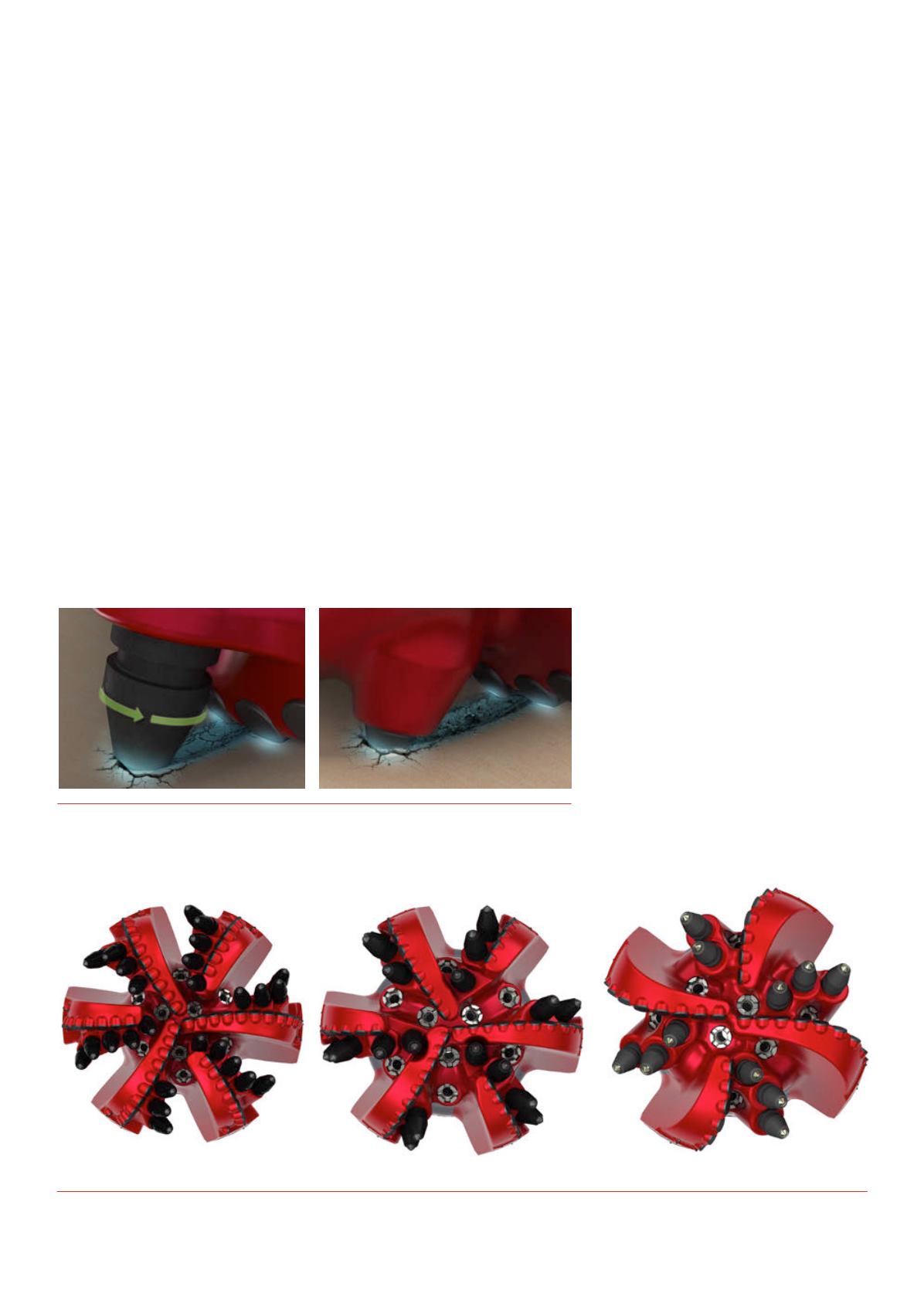
22 |
Oilfield Technology
June
2016
The vast majority of wells around the world are still drilled by
traditional PDC and rollercone bits, both of which have unique
sets of benefits and drawbacks. The shearing mechanism of
PDC bits enables increased rate of penetration (ROP) capability
and aggressive drilling behaviour, but can often produce
undesirable torque response. In terms of durability, some
applications still cannot be feasibly drilled by PDC bits, due in
part to the limitations of even the industry’s best PDC cutters to
resist abrasive, thermal and impact damage in a conventional
fixed-cutter layout. Rollercone bits and some hybrid designs
continue to excel in certain situations – for instance, when
excellent toolface control or high impact resistance is desired –
but often lack in ROP potential and are restricted in operating
hours by seal and bearing life.
To address the limitations of conventional drill bits,
SHEAR BITS introduced Pexus™ Hybrid Drill Bit technology
to the industry in mid-2013, and since then, has evolved the
technology through a philosophy of continuous improvement.
Each run with these bits brings valuable new information to the
development team, which communicates closely with operators
to find opportunities to increase performance and expand the
technology into a wider range of applications. In a few short
years, these bits have performed hundreds of runs, totalling over
1 million ft drilled.
Advantagesof thetechnology
Pexus Hybrid Bits employ a layout comprising a set of primary,
leading gouging inserts, and a secondary PDC shearing cutting
structure
1
(Figure 1). The gouging elements are offered as either
rotating or fixed components in either carbide or diamond,
and other custom configurations are available to suit a wide
variety of applications. This hybrid cutting structure provides
performance advantages in three key ways:
Ì
Ì
Uses two cutting structures to fail the formation, with the
gouging elements in a leading position to fracture the rock
initially. Consequently, the individual loading on each
trailing PDC cutter is lessened, enabling them to maintain
ROP and stay sharper in longer runs.
Ì
Ì
Gouging inserts in a leading position protect the secondary
PDC cutting structure by dislodging clasts from the formation
such as large debris (gravel and boulders), or coarse grained
conglomerates (large pyrite and chert fragments). These
particles can be carried away through fluid pathways before
they are able to damage the PDC cutters.
Ì
Ì
Fine adjustment of the relative position between the gouging
and shearing elements enables the bit to control the amount
that each cutting structure interacts with the formation.
This has repeatedly proven to provide a far smoother torque
response and greater directional control over conventional
PDC bits.
Stagesof evolution
To date, the technology has undergone three major ‘generations’
of development, each of which targeted a different range of
applications where conventional drill bit designs fell short.
Efforts are underway to both improve on current designs and
bring completely new ideas to the table.
Figure 1.
Pexus hybridgouging/shearing cuttingmechanismusing either rotating (left) or fixed
(right) inserts.
Figure 2.
Generation 1 (left), Generation 2 (centre), andGeneration 3 (right) Pexus hybriddesigns.
Firstgeneration
Generation 1 Pexus designs were born out of
a need for a more effective drilling solution
in formation types where PDC bits were
easily and quickly damaged – this includes
gravel, boulders, chert, and pyrite, which
are normally drilled by rollercone bits at
relatively low ROPs. Test runs in these rock
types have also been performed in the past
using mining bits, but were met with limited
success (mining bits contain gouging inserts
as the only cutting structure). Although these


